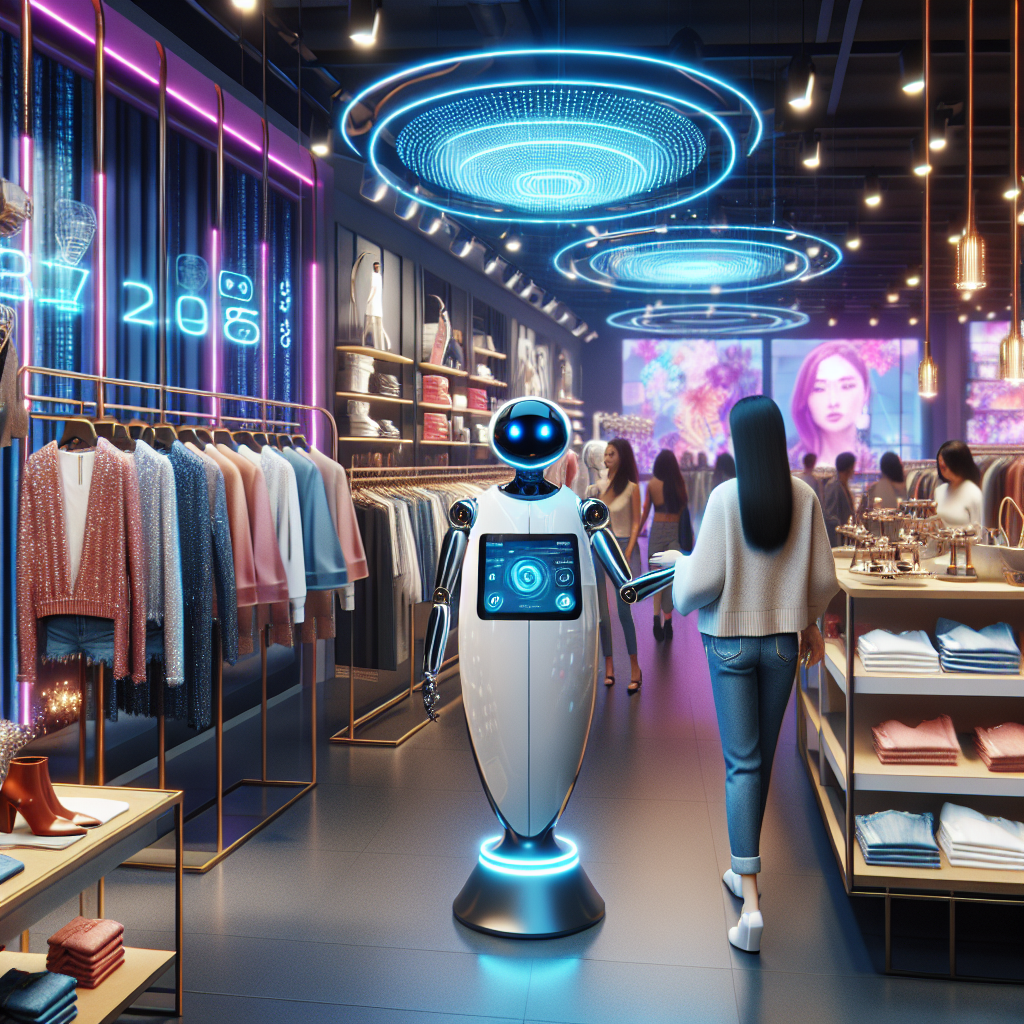AI-Powered Fashion Retail: How Artificial Intelligence is Enhancing the Customer Experience
Artificial Intelligence (AI) has revolutionized many industries, and fashion retail is no exception. With the rise of e-commerce and online shopping, retailers are increasingly turning to AI to enhance the customer experience, improve efficiency, and drive sales. From personalized recommendations to virtual fitting rooms, AI-powered solutions are transforming the way we shop for clothes and accessories.
In this article, we will explore the various ways in which AI is being used in the fashion retail industry to enhance the customer experience and drive business growth.
Personalized Recommendations
One of the most significant ways in which AI is shaping the fashion retail landscape is through personalized recommendations. AI algorithms analyze customer data, such as browsing history, purchase history, and preferences, to generate personalized product recommendations. This not only helps customers discover new styles and trends but also increases the likelihood of them making a purchase.
For example, online retailer ASOS uses AI to provide personalized recommendations to its customers. The company’s AI-powered recommendation engine analyzes customer data to suggest products that are tailored to each individual’s style and preferences. This has helped ASOS increase sales and improve customer satisfaction.
Virtual Fitting Rooms
Another innovative application of AI in fashion retail is virtual fitting rooms. These virtual platforms use AI technology to create a digital representation of a customer’s body, allowing them to try on clothes virtually before making a purchase. This not only helps customers visualize how a particular item will look on them but also reduces the likelihood of returns, as customers can make more informed purchasing decisions.
Companies like Uniqlo and Gap have implemented virtual fitting rooms in their online stores, allowing customers to try on clothes virtually using their smartphones or computers. This technology has been particularly useful during the COVID-19 pandemic when many brick-and-mortar stores were closed, and customers were unable to try on clothes in person.
Predictive Analytics
AI-powered predictive analytics is another game-changer in the fashion retail industry. These algorithms analyze historical data to forecast future trends, demand, and customer behavior. This allows retailers to make informed decisions about inventory management, pricing, and marketing strategies, ultimately improving their bottom line.
For example, Zara uses AI-powered predictive analytics to optimize its supply chain and inventory management. The company analyzes data from sales, weather patterns, and social media to forecast demand and adjust its production accordingly. This has helped Zara reduce excess inventory, minimize stockouts, and increase profitability.
Chatbots
AI-powered chatbots are also becoming increasingly popular in the fashion retail industry. These virtual assistants use natural language processing and machine learning to interact with customers, answer their questions, and provide personalized recommendations. Chatbots can help customers with sizing, styling advice, and product information, enhancing the overall shopping experience.
Luxury fashion retailer Burberry has implemented a chatbot on its website to assist customers with their inquiries. The chatbot uses AI technology to understand and respond to customers’ messages in real-time, providing a seamless and personalized shopping experience. This has helped Burberry improve customer engagement and drive sales.
FAQs
Q: How is AI being used in fashion retail?
A: AI is being used in fashion retail in various ways, including personalized recommendations, virtual fitting rooms, predictive analytics, and chatbots. These AI-powered solutions help retailers enhance the customer experience, improve efficiency, and drive sales.
Q: How do personalized recommendations work?
A: Personalized recommendations use AI algorithms to analyze customer data, such as browsing history and preferences, to generate tailored product suggestions. This helps customers discover new styles and trends and increases the likelihood of them making a purchase.
Q: What are virtual fitting rooms?
A: Virtual fitting rooms use AI technology to create a digital representation of a customer’s body, allowing them to try on clothes virtually before making a purchase. This helps customers visualize how a particular item will look on them and reduces the likelihood of returns.
Q: How do predictive analytics benefit fashion retailers?
A: Predictive analytics use AI algorithms to analyze historical data and forecast future trends, demand, and customer behavior. This helps retailers make informed decisions about inventory management, pricing, and marketing strategies, ultimately improving their bottom line.
Q: How do chatbots enhance the customer experience in fashion retail?
A: Chatbots use natural language processing and machine learning to interact with customers, answer their questions, and provide personalized recommendations. This helps customers with sizing, styling advice, and product information, enhancing the overall shopping experience.
In conclusion, AI-powered solutions are revolutionizing the fashion retail industry, enhancing the customer experience, and driving business growth. From personalized recommendations to virtual fitting rooms, AI technology is transforming the way we shop for clothes and accessories. As retailers continue to adopt AI-powered solutions, we can expect to see even more innovative and personalized shopping experiences in the future.

